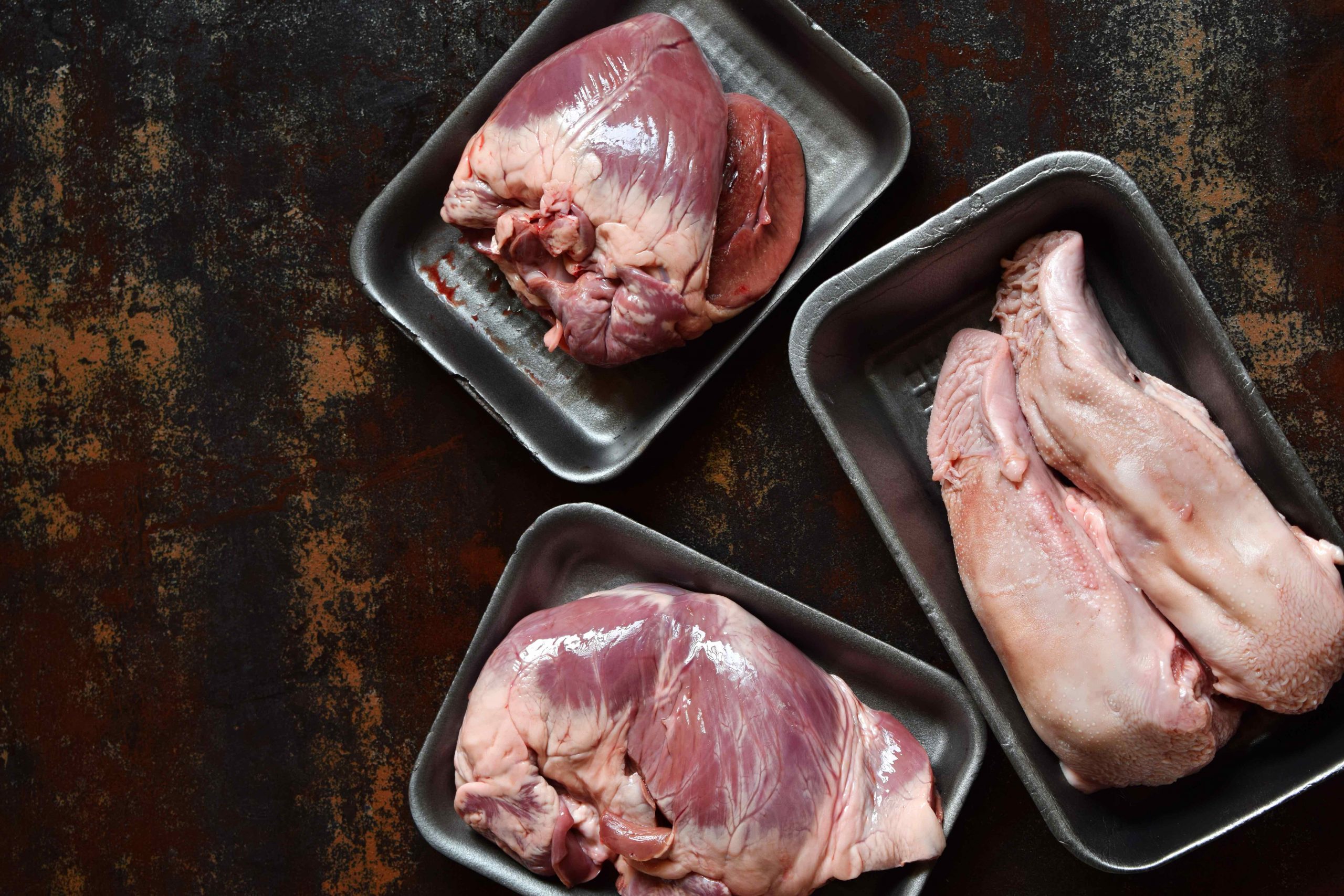Nose-to-Tail Guide #1: Offal

From the early beginnings of the Isle of Wight Meat Co. we knew that a core part of our ethos was to promote a nose-to-tail approach to the butchery and consumption of our stock. If we are going to eat meat, then we need to do it better, and that mantra extends to every edible morsel of the animal.
It is not only economical, to both us the producer and you the consumer, but also respectful to the animal. And the more efficient we are in our eating, the less stock we need to feed ourselves, which reduces the pressure on our environment.
For those who are a little squeamish about the whole thing – if you like oxtail soup, sausages or some nice pate on your cracker then you are already half way there.
A key to great offal is to get it fresh. By law we are only allowed to offer a fresh shelf-life of up to 7 days, so the majority gets frozen down on arrival. We send our stock off every two weeks so we have fresh offal every other Friday. If you get in touch we can have orders ready to go out on the Friday or the following Monday.
The slight grey area is what actually arrives back. We request all of the offal but some times it is a little hit-and-miss as to what the abattoir sends with the carcasses. The most irregular being the Onglet (diaphragm muscle) and the ox cheeks as there are strong overseas markets for these cuts. However if we have specific requests we will ensure they are sent back.
So here is our pick of the cuts:
1. Onglet Steak
Onglet or Hanger Steak as it is also known, is a cut the hangs between and the rib and the loin supporting the diaphragm. It tends to have a more gamey flavour and is very lean, it should only be cooked rare to medium-rare as it will become very tough if taken any further. It is a very sought after cut for connoisseurs of the nose-to-tail approach and a great starting point on the offal journey.
2. Ox Cheek
A traditional thrifty cut that had nearly disappeared from UK diets, until resurrected over the past few years by well-known chefs adding it to their restaurant menus. Cooked correctly (a very long 4+ hour braise) it is transformed into a incredibly moist, unctuous, tender thing of beauty. There is no better beef cut for a hearty winter stew.
3. Ox Tongue
For first-timers the tongue can look a pretty daunting proposition, but handled correctly is an easy cut to work with. It firstly need a good scrub followed by a soak, then a long simmer for over 3 hours. Once cooked you peel the skin off and then it is ready to traditionally pressed, sliced and pan-fried or even braised further.
4. Ox Heart
Ox heart was very much a staple, until along with many other offal cuts it went out of fashion. Now it is one of the cheapest cuts per kg you can buy. It is a very lean muscle with a strong beefy flavour and can be sliced and pan-fired, stuffed and braised.
5. Oxtail
Oxtail like cheek has seen a resurgence in recent years. Traditionally a cut of the ‘poor’, many peoples only experience of this cut is via a well-known soup brand. It is on the bone and quite fatty so needs a very low and slow braise to bring out the best. Fantastic in hearty stews and of course the much loved classic soup dish.
6. Liver
Liver fell foul of post-war school dinners where it tended to be over-cooked and paired with some equally unappealing accompaniments. Many scared for life, never returned to this incredible healthy cut. It has the greatest concentration of vitamin A than any other food source and packed full of vitamin C, D and B12. Importantly it is also a rich source of Iron. Cooked delicately and paired with the right ingredients this cut produces exceptional results.
7. Kidney
Like liver, kidney’s reputation has suffered from bad childhood memories and stodgy pies and puddings. Again like liver, it is incredibly nutritious and treated in the right way – lightly pan-fried with some butter, garlic and lemon juice, it can really sing as a dish.
So there you have it, our first instalment in our Nose-to-Tail Guide. Hopefully it may give you the confidence to experiment with these cuts and make some regular staples in your culinary repertoire.
As it it spring time and we areal stuck at home, our pick would be to try a hand at cold-pressing an ox tongue. Thinly sliced with some pickles or horseradish it makes a fantastic sandwich filling that will last all week.

